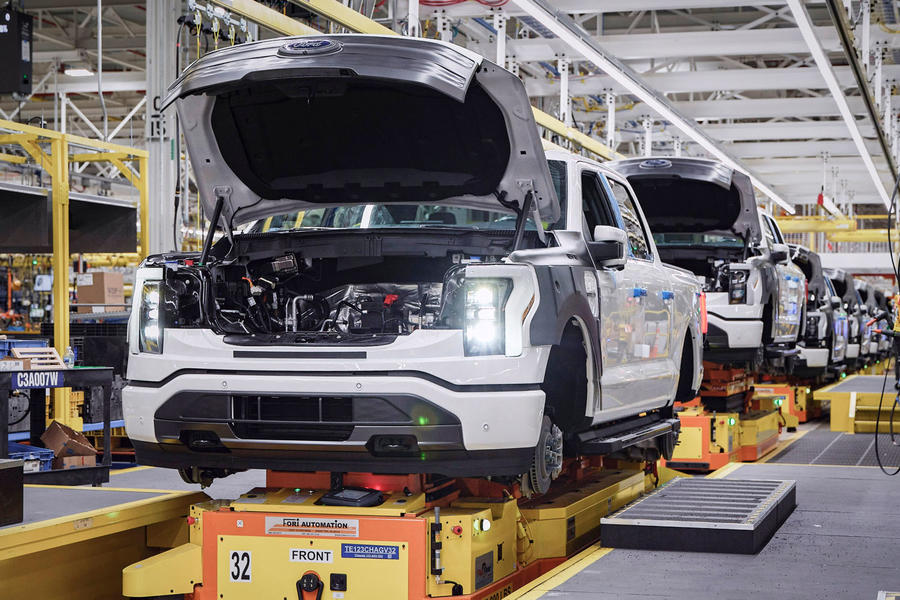Proposed standards apply to light-duty trucks, including the best-selling Ford F-150
New laws to cut CO2 emissions would require two-thirds of all vehicles sold in the US to be EVs by 2032
The US government has effectively told American consumers that they must buy a majority of electric vehicles by 2032 via a tough new proposal that severely limits the amount of CO2 emitted by new cars and light trucks.
The proposals – announced on Wednesday by the Environment Protection Agency, a US government body – would set a limit of 82g per mile (51g/km) by 2032, with the new tougher restrictions starting from 2027.
The proposed standards would include new restrictions on tailpipe emissions such as oxides of nitrogen and encompasses all vehicles from cars to light-duty trucks, including the best-selling Ford F-150 pick-up. Medium- and heavy-duty trucks are also included in the proposals, but with a separate standard aimed at boosting electrification in the commercial sectors.
The White House said in a statement that the EPA’s average CO2 target was “technology neutral” in that it allowed solutions such as electric vehicles, plug-in hybrids, hybrids and fuel cell vehicles. However, the 51g/km figure is tough enough that EPA envisages that two-thirds of all vehicles sold by 2032 would have to be electric to meet the criteria.
The proposals place the burden on car manufacturers to hit targets following the US government’s passing last August of the Inflation Reduction Act (IRA), which incentivises both the purchase and production of EVs in the US.
Under the IRA, buyers can cut up to $7500 from the purchase price of an electric car while manufacturers can claw back tax incentives of $35 per kilowatt-hour (kWh) for US production of battery cells.

European car makers have complained that the subsidies unfairly favour vehicle brands that have local manufacturing facilities and they have called for similar subsidies in Europe.
Read more: Industry calls for EU support as VW pauses Europe battery plans
US president Joe Biden has already set a goal that at least 50% of all new passenger cars and light trucks sold in 2030 be zero-emission vehicles.
Across the US, individual states have set tougher targets. California, New York, Massachusetts and Washington State have decreed that all light-duty vehicles sold will be zero emissions by 2035, with others likely to follow.
So far, the US has moved more slowly towards electric than Europe and China. Last year, BEVs accounted for 6% of the light-duty vehicle market, compared with 17% for the UK car market in the same period. Last year, Tesla accounted for 64% of the BEV market in the US, according to figures from Automotive News. Under the proposals, car companies beating the emissions targets would still be able to sell credits to those in danger of missing the cut, meaning Tesla would continue to benefit from that revenue stream.
Source: Autocar